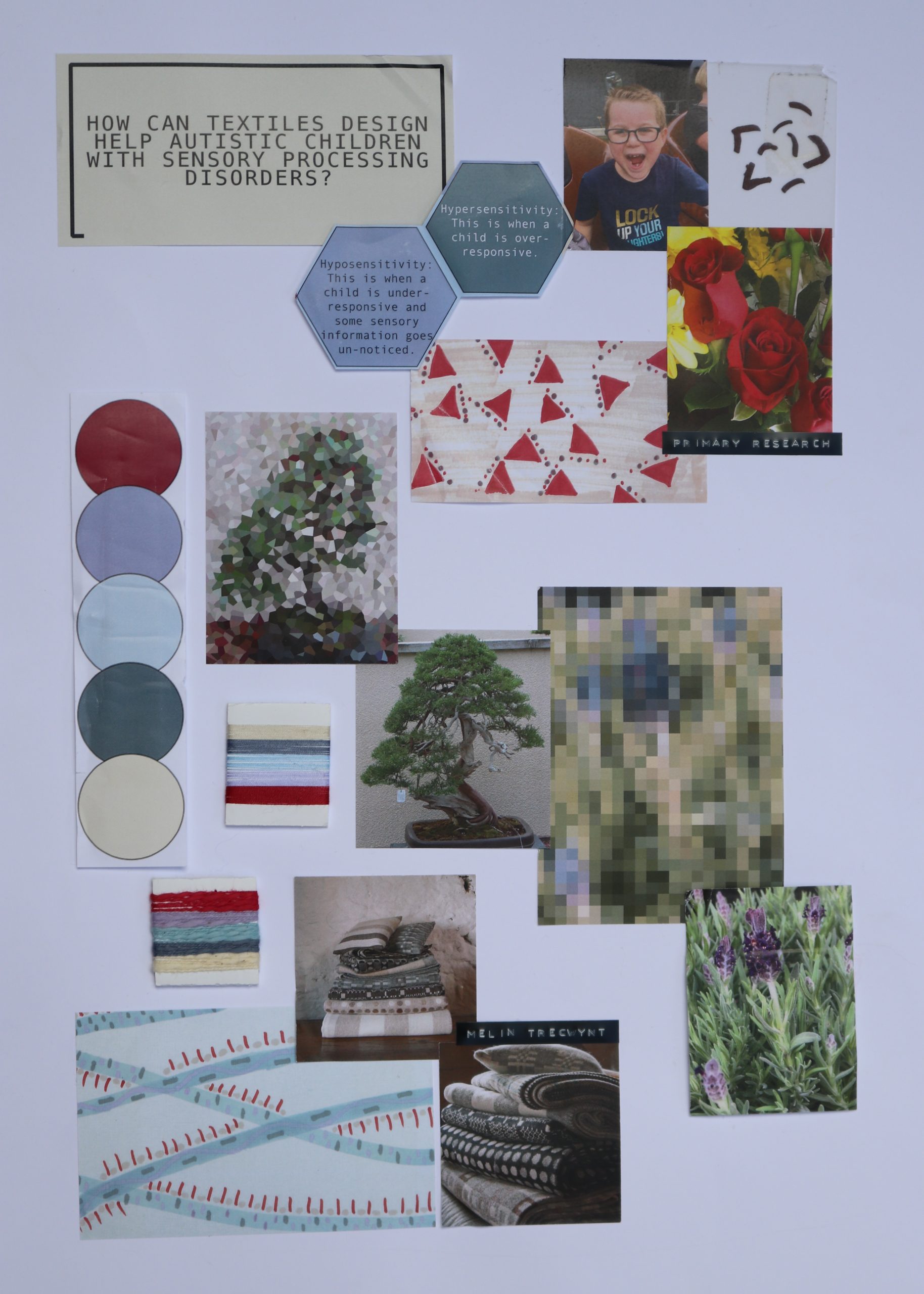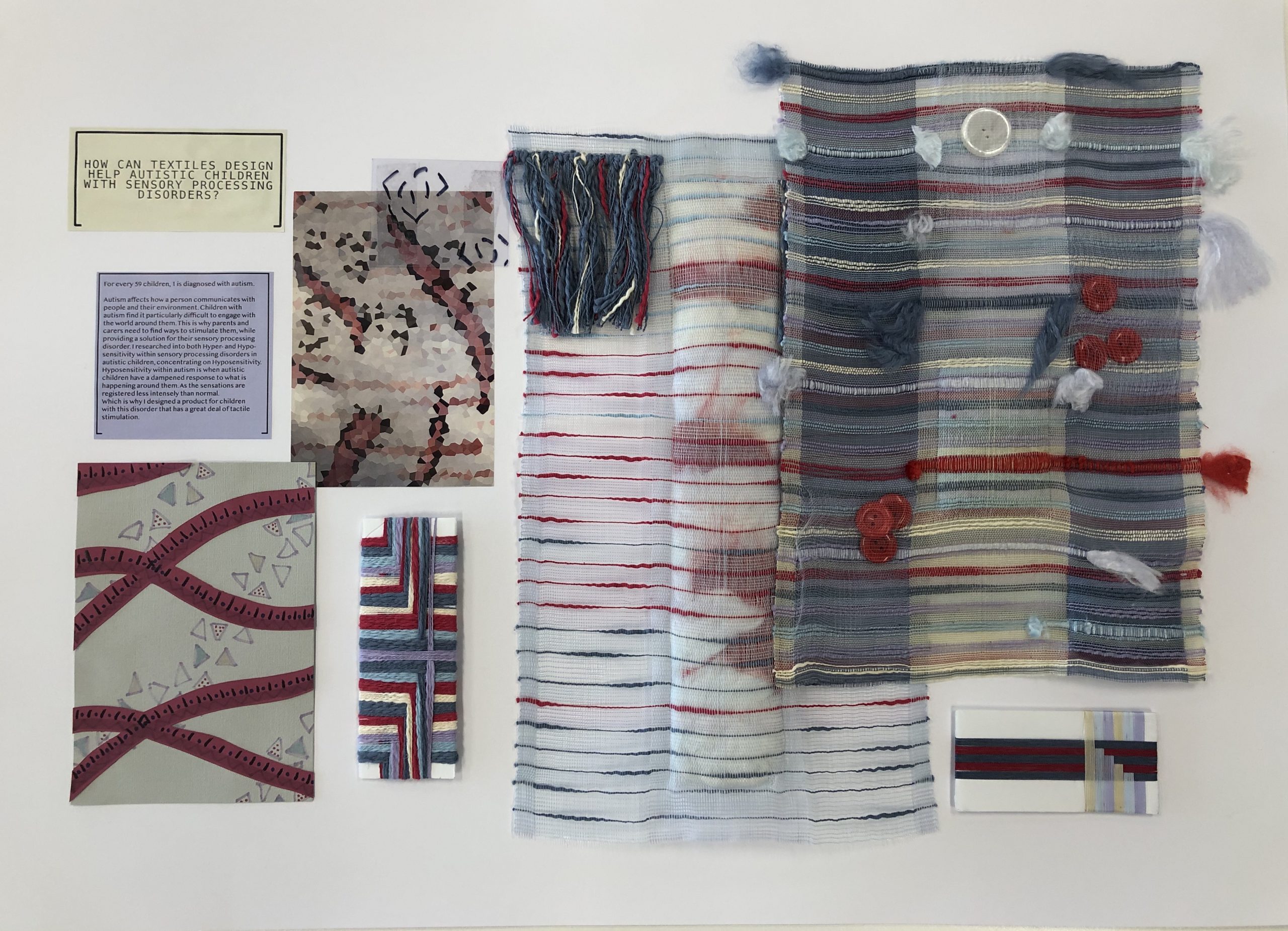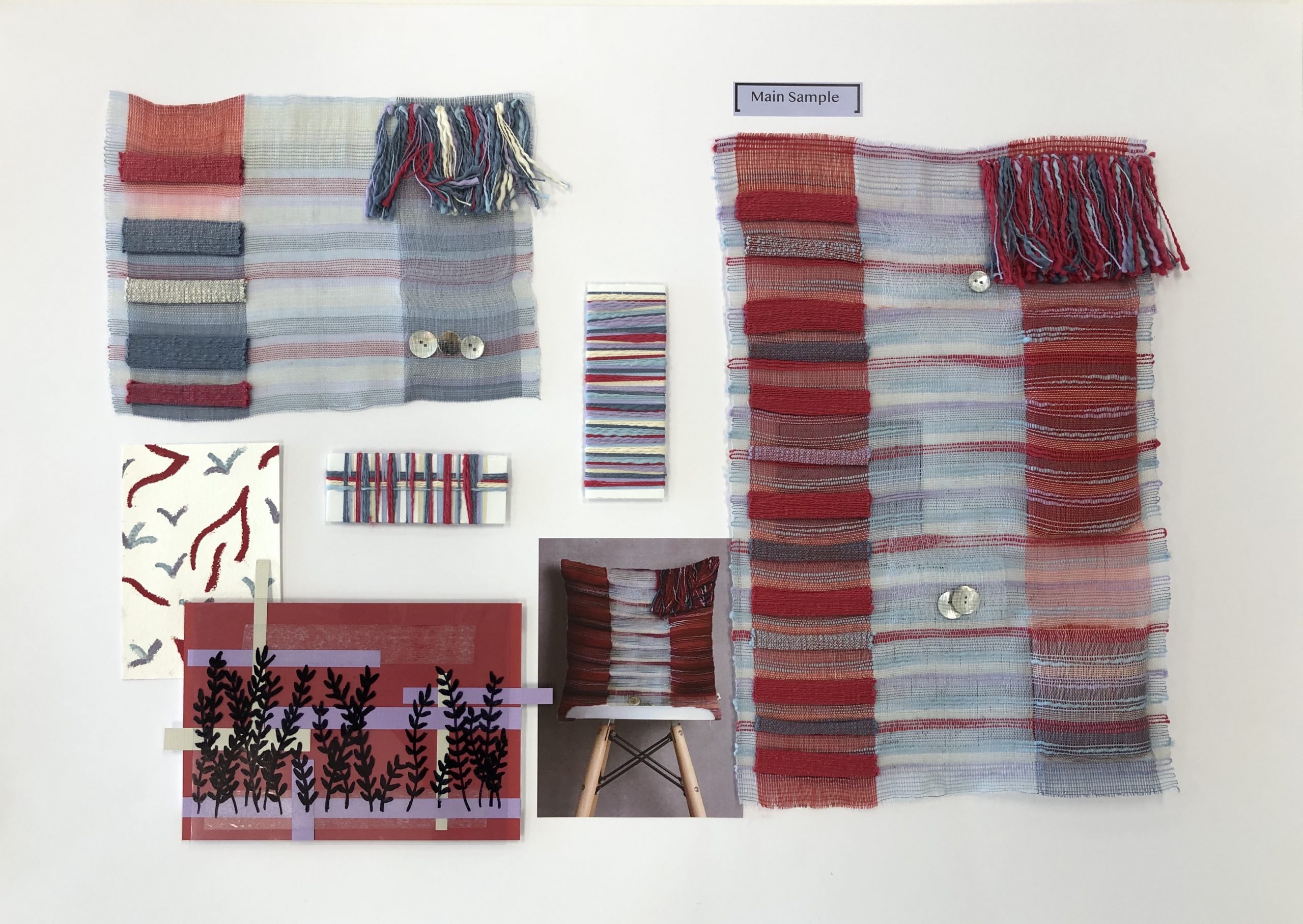HOW CAN TEXTILES DESIGN HELP AUTISTIC CHILDREN WITH SENSORY PROCESSING DISORDERS?

Useful information
- Team members
- Hannah Brown
- Country
- United Kingdom
- Keywords
- sensory textiles interiors children autism textiles handwoven
Short Description
Designing an interior collection for autistic children with sensory processing disorders.
Detailed Description
Children with autism find it difficult to engage with the world around them and parents and carers need to find ways to stimulate their child, whilst providing solutions for their sensory processing disorders. I decided to focus on designing a collection for autistic children with Hypersensitivity and Hyposensitivity within sensory processing disorders and how I could design a product that can help stimulate their senses. Hypersensitivity is when a child is over-responsive to sensory stimuli and Hyposensitivity is when a child is under-responsive and so some sensory interactions go unnoticed.
All samples are handwoven and designed to include pockets that contain sensory stimuli as well as tassels and pleats to allow an autistic child to explore their senses. The Hypersensitivity samples had less colour and textures incorporated into the design to avoid a sensory overload. Whereas the Hyposensitivity samples had a lot more colours and textures to provide more sensory stimulations.
Project Details
- Does your design take social and cultural challenges and human wellbeing into consideration?
When designing my collection, I focused on the UN Sustainable development Goal 3, Good Health and Well-being which is all about ensuring healthy lives and promoting well-being for everyone at all ages. I did this by conducting a questionnaire where I asked parents and carers of autistic children what challenges and sensory issues that they face all to ensure that the children’s well-being was taken into consideration. I also got to talk to some children with autism to find out what colours and textures they prefer.
- Does your design support sustainable production, embodying circular or regenerative design practices?
I focused my sustainability research on the TED TEN strategies, with particular focus on ‘Design to minimise waste’, ‘Design Activism’ and ‘Design to reduce the need to consume’. I achieved sustainable production by talking to parents and carers about the needs of autistic children and how I could adapt my designs to their needs. I did this by designing a product for both Hypersensitivity and Hyposensitivity this ensured that there is something available for all autistic children. By designing for the autistic child’s wants and needs, it will reduce the need the consume and reduce the amount of waste as I have produced a bespoke product. By engaging with parents and carers of autistic children it will hopefully evoke an emotional connection to the product which means that the product is more likely to be taken care of. Working creatively with the parents and consumers I took into account the best colours and textures to use within the product. I then used sustainable yarns where possible whilst also ensuring that they were autism-friendly.
- Does your design promote awareness of responsible design and consumption?
I believe that my design does promote awareness of responsible design and consumption as I thoroughly researched into sensory processing disorders which autistic children experience, to find out that they can either be over-responsive to sensory stimuli (Hypersensitivity) or under-responsive (Hyposensitivity). I found it to be extremely important to understand the differences as it would be detrimental to cause the wrong reaction in an autistic child as you would not what to cause them to have a sensory overload. By communicating with parents and carers I found it very helpful as it made, we more aware of how I could design a product that took into account all the sensory needs that autistic have as well as making it easy to use and maintain for the parents and carers.
Images


